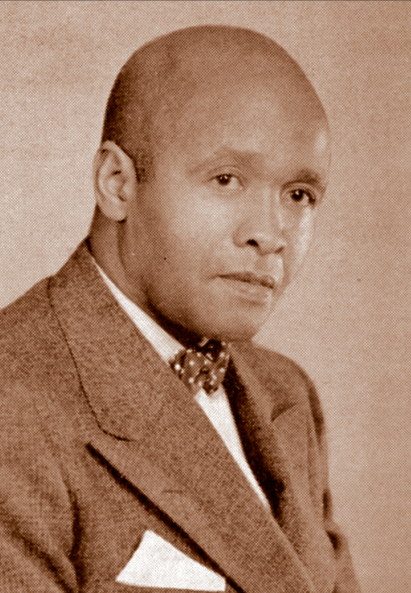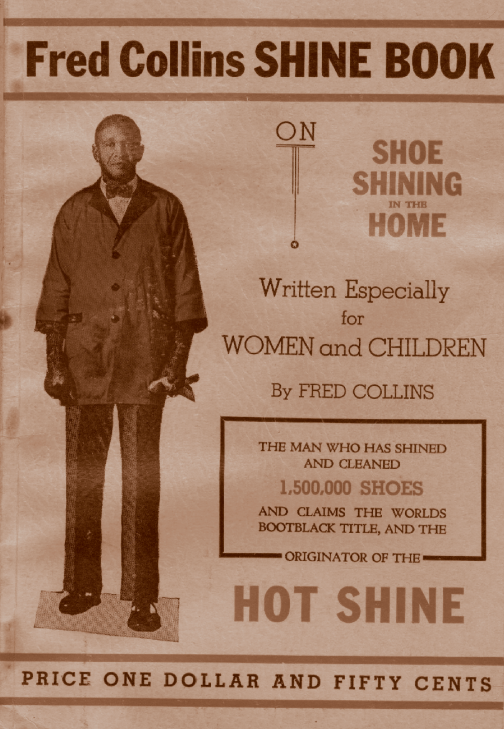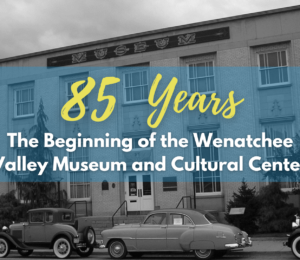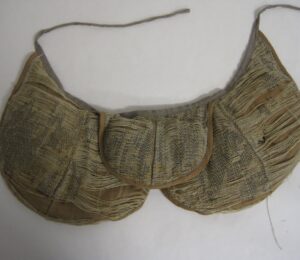Fred Collins: Premier Shoe Shiner – 2/23/2024
Written by Chris Rader
Few people, living or dead, could compete with Wenatchee’s Fred Collins at shining shoes. He asserted that he had shined and cleaned 1,500,000 shoes during his career, originated the “hot shine” technique, and claimed the world’s bootblack title. He even published an 83-page paperback titled Fred Collins Shine Book in 1941. This book covered the cleaning and shining of
every imaginable type of shoe available at the time: suede, buck, kid, calfskin, linen, canvas, leather, patent leather, elk, Panama (made of the same material as a Panama hat), velvet, brocade, black stipple and all sorts of fabric shoes.
For decades, Collins was a fixture at the Mecca barber shop at 19 South Wenatchee Avenue. (This location later housed Miller’s Camera; the current occupant is Firehouse Pet Shop.) John Carey was the Mecca proprietor; before working out an agreement to operate his shoeshine stand at the Mecca, Collins shined shoes at the J.A. Haines barbershop at 10 South Wenatchee Avenue.
Fred Collins was an affable man with a pleasant smile. He had a bald head and roundish face and was just under six feet tall. Darold Wax recalls him as always having something to say, so there were no uncomfortable silences during the shine and the customer felt at ease. (Wax competed with Collins for a year in the 1940s, and then received his own shines from him.)
Fred Collins’ early years
The Shine Book contained several pages of enlightening autobiographical detail about Collins’ life. He was born in a backwoods log cabin outside Hempstead, Texas “on a September morn” around 1885 to Mr. and Mrs. Squire Collins. Fred’s father was a woodchopper and a “jack-leg” or unordained preacher. The family had little money but never went without food. “Possums, coons, rabbits, squirrels, and chokers (low-grade sweet potatoes) were always plentiful and cheap,” Fred noted. His older brothers chopped wood and picked cotton, but Fred found his calling in “blacking boots,” as shoe shining was called back then. He started his career at about nine years old.
My equipment consisted of a shining box, one brush with a handle on one end and a dauber on the other, and a box of blacking. The price of a shine was five cents and fifteen cents for boots, and there were many of the latter worn….
My chief stand was in front of (saloons) to catch drunks as they came out. They were my best customers. A drunk was generally good for more than the regular price, It all depended on how drunk he was to the amount he paid.
Fred and his young friends played in Hempstead’s Shirt-tail Tin Band. It consisted of large cans for drums and iron pipes for horns. Fred replaced his older brother Frank Collins as drummer when Frank got tired of the band. “We would practice during the day and play at night, because the sound would carry farther,” he wrote. “With a good wind it could be heard for a mile. At times
we would go from place to place in the neighborhood. After so long we got real good, that is, we had good time (rhythm) and you’d be surprised at the music we could get out of those pipes and cans. It was swing music.”
Collins shined shoes in Hempstead for two or three years and completed the fifth grade at school. Then, with his mother’s permission, he joined a cotton-picking crew to work in Elgin, Texas.
When you pick cotton you drag a long canvas sack with a strap over your shoulder. Three hundred pounds is considered a day’s work for an adult, however, there were many who could pick five-hundred pounds or more. We were paid 75 cents per one-hundred pounds; that was good money in those days…. I’d be picking along, probably singing a song or thinking about a possum or yellow leg chicken, then all of a sudden I’d look down and see a big rattler crawling away or coiled up ready to strike – woo-wo-o, but that would frighten me. I’d jump back, get myself together then kill him, but it would upset me for a while.
Collins then moved to Waco to live with a sister. He found a job as “porter” – meaning errand, cleaning and shoeshine boy – at Frank Johnson’s barber shop.
In those days, black and tan, and a few white shoes were about all that were worn – and as for shining ladies and children there was no such thing. With my first earnings I bought some city clothes and soon afterward started to pay on a bicycle. This was something I had always wanted but unable to get. I was not allowed to run through with my money. My sister kept it, giving me what she thought was right and sending the rest to my mother, which was O.K. with me.
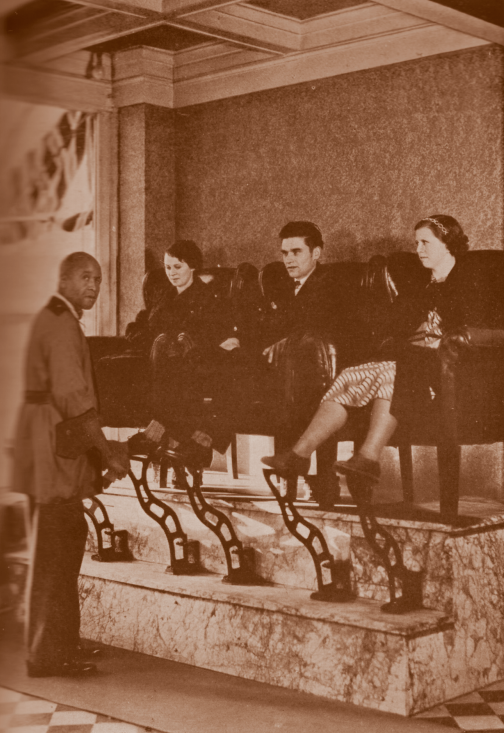
Fred Collins shined shoes at the Mecca barbershop for nearly 50 years. Wenatchee Valley Museum & Cultural Center #012-55-1
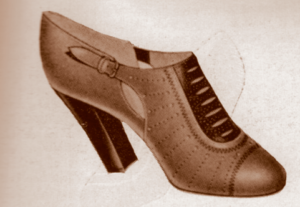
Collins’ shoe shine book included many illustrations, such as this one explaining “How to Bronze Kid Skin Shoes.” He wrote that one should paint the shoes with bronze dressing. “The dark shades are preferable, especially the
black, because you may want to change back; and to do this, bronze can be removed with lacquer thinner (paint remover) and there will be no spots afterward.” Wenatchee Valley Museum #012-55-1
Fred Collins worked at this barber shop in Waco for about four years until having his heart broken in his first romance with “Miss S.E.” He headed back to his mother in Hempstead, but got sidetracked and joined a circus in Houston. He cared for a string of young, sick monkeys and got to ride Big Joe the elephant in a parade before being fired in Tucson for poking a mean lion in the ribs with a long-handled fork.
At this point Collins caught a train to Los Angeles, where within a day he found a job shining shoes. He was called home for a brother’s funeral and then hit the road – living briefly in Oakland, Portland and then arriving in Seattle in 1909. Here he worked at A.C. Bunker’s barbershop on First Avenue.
It was in this place that I received the largest amount for a shine. It was a $10 gold piece given to me by a slightly intoxicated sailor. It was Fleet Week during the (Alaska Yukon Pacific) Exposition, in 1909. The town was full of sailors and they were spending money just like they were afraid to keep it…. While in Seattle, I did some amateur boxing and I thought I was pretty good because I was strong and very fast with my hands and no doubt I would get some place had I continued – probably got killed!
Collins heard about Wenatchee being a very good town and decided to check it out. As the train pulled into town, he was impressed to see the sign across from the depot: “Wenatchee, the Home of the Big Red Apple, Where the Dollars Grow on Trees.”
Arrives in Wenatchee c. 1910
Collins got a job right away at Fred Yoder’s Barber Shop on Wenatchee Avenue. He made good money, as high as $105 per week, and would have stayed had not the shop caught fire and burned to the ground. He then found work as a porter for barber J.A. Haines and eventually at the Mecca.
After his first several months in Wenatchee, Fred Collins wrote, “settling down entered my mind and that means to get married and raise a family, and that’s just what happened.” There not being many African-Americans in Wenatchee, he thought about going back to Texas to find a bride – “but a tall good-looking brown-skin girl from Spokane, by the name of Melba Vaughner, changed my mind.”
In 1941, at the time of his book’s publication, Fred and Melba Collins had six children ranging in age from nine to 27: Gladys, Helen, Grant, Betty, Frank, Veda (nicknamed Tudy) and three grandchildren. He wrote that their first child, Veda Colleen (who became Mrs. William Beaumonte, of Seattle), “was the first colored baby born in this famous Wenatchee Valley.” Fred and Melba divorced sometime in the 1930s and Fred’s mother, Betty, came north to live with him and care for the children when they stayed with their dad.
Fred Collins’ third child, Betty, was born in Wenatchee in 1917. In an interview with Wenatchee World reporter Jeanette Marantos, Betty Collins Shellman recalled her father giving his children a sense of right and wrong and providing structure. “He told us there were certain things you don’t do. You don’t go breaking windows, go stealing or running up and down the street doing this, that or the other. He told us you reach for the highest in life, and if you want to be smart, be straight” (1).
Marantos asked Shellman if she encountered racism while living in Wenatchee, before relocating to Seattle in 1936. ”There was racism, but it usually came from the top people,” Shellman said. “Everyday people like the neighbors next door were all friendly. There was a period when kids would call you names, but Dad would always say, ‘Don’t pay attention them, because they’re ignorant.’”
Shellman remembered hiking around Wenatchee, playing Chinese checkers, practicing the piano and attending Stevens School. When Black children were young they were included in activities with their white friends, she said, but when they got older the invitations stopped, even to school dances. “After a certain age, about 12 to 15, they wouldn’t invite us. We knew we’d be excluded” (2).
Fred Collins continued his shoe shining career through the mid-1960s. He slowly lost his vision and was diagnosed with glaucoma. He entered a nursing home in Seattle in the late ‘60s and died there in 1971 at the age of 86.
SOURCES and ENDNOTES
Fred Collins, Fred Collins Shine Book on Shoe Shining in the Home, Written Especially for Women and Children, 1941 – from the Wenatchee Valley Museum’s collection.
1 and 2. Jeanette Marantos (with Neomah Scharps), “A Part of Our Legacy,” Wenatchee World, March 22, 1992.
This story was originally published in Confluence Magazine in the Summer edition of 2022. In an effort to preserve these stories, the Wenatchee Valley Museum and Cultural Center will be posting these stories on the museum’s official blog.
Become a member to get a free copy of Confluence Magazine. Learn more about how to become a member here!

